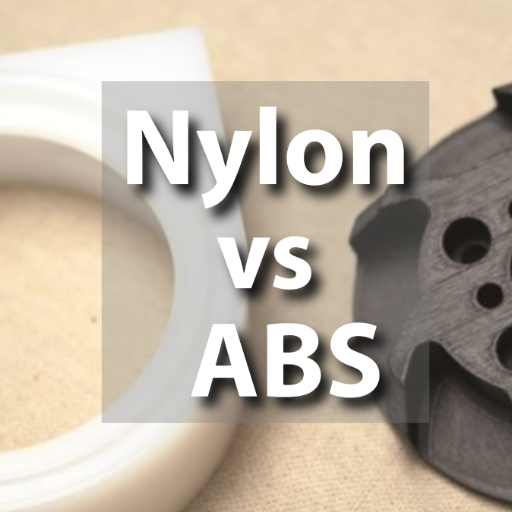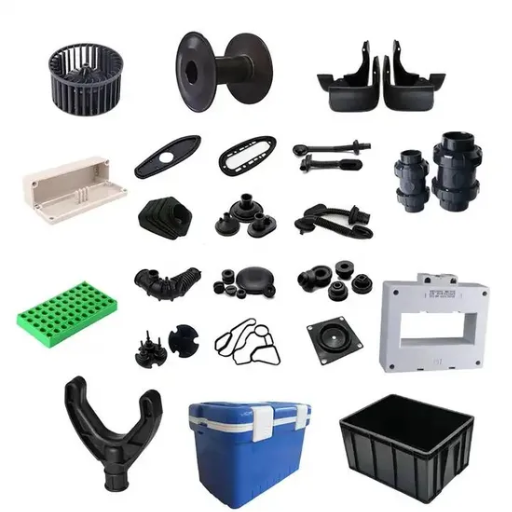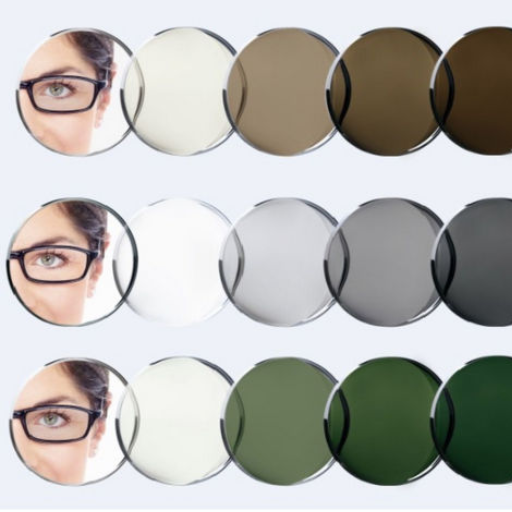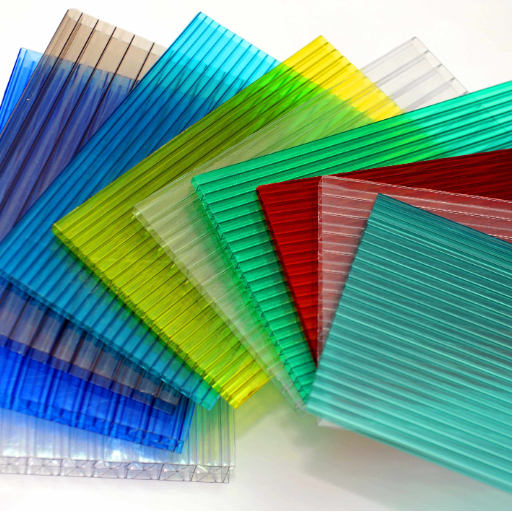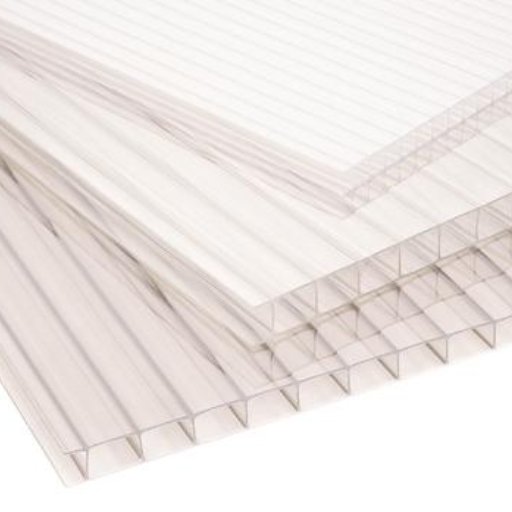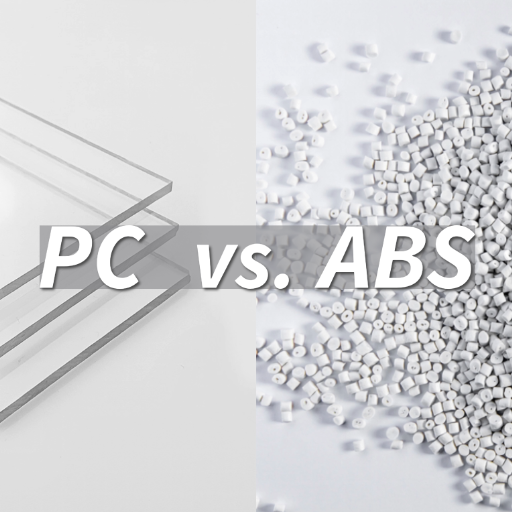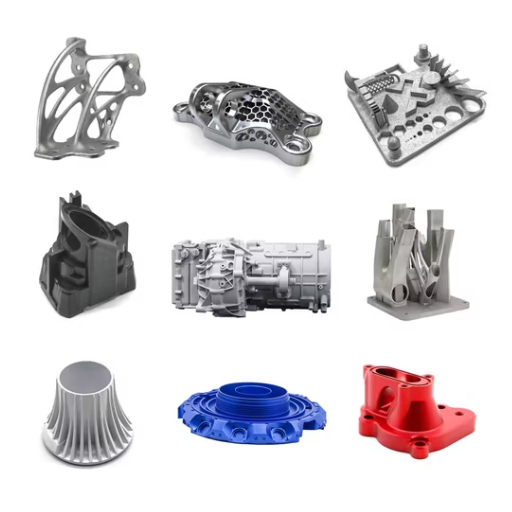Polyoxymethylene (POM) also called acetal sheet is a plastic sheet that is considered an advanced engineering material due to its outstanding mechanical properties, strength, rigidity, and dimensional stability. The objective of this document is to analyze the strategies and benefits behind the use of this material while detailing its attributes, applications, and use. This document focuses on how POM plastic is singular, its broad usage in automotive components, electronics, and industrial machines, and some suggestions for effective use. This guide caters to professionals in engineering design and those considering sophisticated the materials they wish to work with by providing the requisite information to appreciate the possibilities that POM plastic sheets offer.
What is POM Plastic and Why is it Used?

Polyoxymethylene (POM) is a thermoplastic type of engineering plastic characterized by its strong tensile strength, stiffness, and low friction. It is commonly applied in mechanical engineering due to its high strength stability, wear and tear resistance, as well as moisture and chemical resistance. This makes POM great for the fabrication of highly accurate parts like gears, bearings, and housings for the automotive, electronics, and industrial machinery industries. Moreover, POM can withstand high amounts of load without changing shape which makes it highly useful in tough environments.
Understanding Acetal Plastic
Acetal plastic, more scientifically known as Polyoxymethylene (POM), is one of the most often utilized engineering thermoplastics boasting superior mechanical characteristics due to its helpfulness in the industrial sector. Acetal comes in two fundamental varieties, namely, homopolymer and copolymer, both of which provide unique benefits. Acetal is suitable for use in applications that have low friction and high load-bearing requirements for precision parts like bearings because of its high strength, dimensional stability, and wear resistance qualities. It is also reliable in harsh environments due to its superior resistance to moisture and a wide range of chemicals and solvents.
Due to its stress and strain enduring capabilities, this material is extensively used in automotive, electronics, medical devices, and industrial machines. Acetal is also excessively used in the molding of products like precision gears, bearings, bushings, pump components, and valve seats, which require minimal deformation even under high stress. It is machined easily and hence preferred in parts with high accurate and repeatable specifications.
Applications of POM Plastic in Various Industries
Polyoxymethylene (POM) plastic, also known as acetal, is widely utilized across numerous industries due to its exceptional mechanical properties and chemical resistance. Below is a concise overview of its applications:
- Automotive Industry
POM plastic is a critical material in automotive manufacturing, used for producing precision components such as fuel system parts, clips, fasteners, interior and exterior trims, and gear mechanisms. Its durability, low friction, and high sliding performance make it ideal for components under continuous load and movement.
- Electronics and Electrical Applications
Due to its insulating properties and excellent dimensional stability, POM is extensively used in electronic devices and electrical engineering. Common applications include switches, connectors, housings, and components in consumer electronics. It withstands high temperatures and maintains structure under prolonged use.
- Medical and Healthcare Sector
POM has applications in medical devices owing to its sterilization compatibility, biocompatibility, and resistance to wear. It is used for manufacturing surgical instruments, drug delivery systems, and orthopedic components that demand precision and hygiene.
- Industrial Machinery
The industrial sector benefits from POM’s strength and ability to perform under stress. It is employed in gears, conveyor belts, sprockets, and bushings for machinery requiring high load capacity, low wear, and minimal maintenance.
- Consumer Goods and Everyday Products
POM plastic is leveraged in producing high-performance consumer goods, including zippers, lighters, water systems, and sporting goods. Its resistance to fatigue and reliable performance make it suitable for long-lasting consumer applications.
Polyoxymethylene’s versatility and advanced properties affirm its role as an essential engineering plastic for industries requiring precision, durability, and chemical resistance in demanding applications.
Benefits of Using POM Plastic Sheet
- High Strength and Stiffness
POM plastic sheet offers exceptional mechanical strength and stiffness, making it highly suitable for applications requiring robust performance under stress. Its high tensile strength ensures reliability in demanding conditions, such as industrial machinery and automotive components.
- Low Friction and Excellent Wear Resistance
One of POM’s notable advantages is its low coefficient of friction, enabling smooth operation in dynamic applications. Additionally, its excellent wear resistance reduces material degradation over time, which is critical in gears, bearings, and sliding mechanisms.
- Dimensional Stability
POM exhibits outstanding dimensional stability due to its low thermal expansion and reduced moisture absorption. This ensures precise performance in environments with varying temperatures and humidity levels, key for components requiring accurate tolerances.
- Chemical and Fatigue Resistance
The material is highly resistant to chemicals, such as fuels, solvents, and weak acids, along with offering excellent resistance to repeated use under mechanical stress. These properties make it ideal for applications in chemical processing, fuel systems, and long-lasting consumer goods.
- Ease of Machining and Processing
POM plastic sheet is easy to machine and fabricate due to its uniform composition and density. This facilitates precise cutting, machining, and molding processes, reducing manufacturing costs and enhancing efficiency.
- Hygienic and Non-Toxic Properties
POM is ideal for food contact and medical applications due to its hygienic, non-toxic nature and ability to uphold stringent regulatory standards. It is commonly used in food processing equipment, medical devices, and household water systems.
These benefits position POM plastic sheet as a versatile material across industries, delivering performance, durability, and reliability in a wide range of critical applications.
How Do Material Properties Affect POM Plastic Sheet Performance?

POM plastic sheets have many uses, and their performance in each application is affected by material properties. POM’s low coefficient of friction and excellent wear resistance enable its application in parts requiring smooth motion, such as bearings and gears. In addition, low friction combined with POM’s high tensile strength and stiffness serves excellent resistance to mechanical stress, making it ideal for use in load-bearing components. Moreover, POM’s excellent chemical resistance enhances its durability by preventing degradation in harsh chemical environments. The material’s stability under low and high-temperature conditions also adds to its durability. POM’s ability to deliver long-lasting performance is affected by all these properties and is therefore suitable for demanding consumer and industrial applications.
Examining Mechanical Properties of POM
The mechanical properties of POM are essential for its function in diverse applications. Straining POM, it exhibits high tensile strength which means it can support substantial loads without significant deformation. In addition, increased stiffness contributes to structural integrity, thus being very suitable for precision parts. Due to POM’s low friction coefficient, between 0.1 to 0.3, it facilitates motion in components such as gears and bearings, prolonging their lifespan due to reduced friction. The material’s resistance to wear is maintained because it can withstand creeping under mechanically stressed loads, ensuring dependability for long-duration applications.
Moreover, POM has excellent dimensional stability because of its low moisture absorption rate which inhibits swelling or distortion in humid environments. Together with low impact resistance, these features allow POM to withstand sudden mechanical shocks. In addition, POM has fatigue resistance enabling it to withstand varying cyclic loads and repeating mechanical stressed scenarios. This property widens the spectrum of applications in demanding environments.
The Role of Chemical Resistance in POM Sheets
The robust chemical resistance of polyoxymethylene (POM) is perhaps its most important property, contributing to its broad adoption in many industrial applications. POM sheets are ideal for environments where organic solvents, fuels, and oils are routinely used, as these materials are resistant to a wide range. Additionally, the material’s resistance to weak acids, alkalis, and many neutral chemicals allows for reliability and longevity in aggressive chemical environments. It is worth mentioning, though, that strong acids and oxidizing agents can significantly weaken POM’s structure over time, so it has little resistance to those.
This chemical resilience is especially advantageous in contact with hydrocarbons or alcohols like those present in automotive fuel systems and industrial machinery. In addition, POMs’ low water absorption serves to further compliment the already astounding features, preventing shape and structural integrity loss in the presence of chemically active or moisture-laden environments. These factors combined bestow chemical resistance, dimensional stability, and mechanical strength, making POM sheets an ideal candidate for specialized and advanced applications.
Impact of Temperature Range on POM Material
POM (Polyoxymethylene) is known for its outstanding thermal stability, usually in the range of -40°F to 212°F (-40°C to 100°C). Within this range, POM offers excellent impact resistance, mechanical strength, rigidity, and stiffness, which makes it fit for use in components that are exposed to different temperatures. However, prolonged exposure to temperatures above 212°F (100°C) may lead to thermal degradation which reduces tensile strength and structural integrity.
POM loses some of its sub-zero impact-resistant toughness at low temperatures, but not to the extent of becoming extremely brittle. In high precision applications, POM’s low coefficient of thermal expansion is beneficial as there is little change in dimensions with temperature changes. Moreover, POM’s crystalline thermally creeps resistant structure allows POM to durable in cyclic temperature change environments. For purposes beyond the specified upper limit, other materials or reinforcements will be needed to ensure that performance does not suffer.
Choosing the Right POM Sheet for Your Needs

Optimum attention to the performance demands specific considerations regarding the selection of the suitable POM sheet, however critical points like operating temperature range matching with POM’s capability must be given utmost importance. If the temperature is above 212°F (100 °C) for long periods, then enhanced grades or different materials with more thermal stability should be considered. Particulars like mechanical demands of the application such as load, stiffness, and impact resistance need to be evaluated at the specific temperature. For low dimensional changes, POM’s low thermal expansion coefficient can be used. Last but not least, specialists with circumstantial knowledge should be consulted when the problem of environmental conditions like moisture, chemicals, temperature change, and other factors are prone in the POM application.
Factors to Consider When Selecting POM Plastic
When selecting POM plastic, several critical factors should be analyzed to ensure the material meets the application’s requirements effectively:
- Mechanical Properties
Evaluate the specific mechanical performance needs of your application, such as tensile strength, stiffness, and impact resistance. For high-load environments, POM plastic’s fatigue resistance and durability make it ideal, but always confirm that the load-bearing capacity aligns with operational demands.
- Thermal Performance
Assess the temperature ranges that the material will endure. Standard POM grades function optimally up to approximately 212°F (100 °C). For applications exceeding this threshold, select enhanced or reinforced grades to maintain structural integrity.
- Chemical Compatibility
Consider the material’s interaction with chemicals, such as fuels, oils, or solvents. POM is resistant to many chemicals but may degrade when exposed to strong acids or bases, necessitating a review of the operating environment’s chemical exposure levels.
- Moisture and Environmental Factors
POM’s low moisture absorption makes it suitable for humid conditions; however, understanding the exposure to varying environmental factors, such as UV radiation or fluctuating temperatures, is essential to minimize material degradation.
- Dimensional Stability
Due to its low thermal expansion coefficient, POM is a preferred choice for precision parts. Ensure stability aligns with stringent dimensional tolerance requirements, particularly in dynamic or temperature-variable environments.
- Cost and Availability
Determine the cost-efficiency of the material relative to the desired performance and assess the availability of standard or specialized grades, keeping in mind long-term application needs.
By evaluating these factors alongside consulting with material specialists or engineers, you can make informed decisions that optimize both performance and cost-efficiency in your application.
Comparing Homopolymer and Copolymer POM
Homopolymer POM (Polyoxymethylene) has a distinct advantage over its copolymer counterpart due to its higher crystallinity. Strength, stiffness, and impact resistance are superior in Homopolymer POM compared to the blended versions, making it an ideal candidate for high-precision applications. Copolymer POM exhibits excellent fatigue endurance and better resistance to creep. However, it is important to note that these polymers are less resistant to thermal degradation and chemical attack, especially from acidic substances, at moderately elevated temperatures.
Although Copolymer POM’s mechanical properties are not as good as Hompolymer POM, it is ideal for harsher environments. This type of POM is more thermally stable and has better resistance to oxidizing agents, and alkaline and hydrolysis conditions. Because of these factors, it is substantially more durable in chemically challenging environments. While it does possess slightly inferior mechanical strength, the overall balance of these properties makes Copolymer POM suitable for a wider range of applications exposed to varying environmental factors.
When choosing which polyformaldehyde type to use, Copolymer or Homopolymer, extreme temperatures, and chemical exposure should be taken into account as the demands for mechanical performance and dimensional stability along with the complexity of the environment play a large role. In scenarios where achieving superior stiffness and strength are paramount, Homopolymer POM should be used while in environments that extend exposure to chemicals and heat, Copolymer POM would be ideal.
Understanding Dimensional Stability in POM Sheets
POM (polyoxymethylene) sheets have their dimensional stability influenced by several features like thermal expansion, moisture intake, and internal strain within the part during its fabrication. Due to the crystalline structure of POM, it has low thermal expansion which maintains its dimensions with moderate temperature fluctuations. However, high temperatures may cause gradual distortion with Copolymer POM typically offering better resistance to these changes than Homopolymer POM.
Moisture absorption influences also, although both Homopolymer and Copolymer POM have low levels of moisture absorption. In regions with high humidity, Copolymer POM has an advantage because it keeps its shape and dimensions for a long time. Furthermore, as a result of extrusion or molding, materials may suffer from residual mechanical tension which may affect further treatment operations. Producing stability is improved through proper annealing during production.
In determining which POM is best for a given application which needs better dimensional stability, the operational conditions including expected temperature cycles, chemical attack, and tolerance criteria should be considered. For applications with narrow tolerances and short exposure times, Homopolymer POM might be more appropriate, whereas Copolymer POM would be better suited for prolonged exposure to harsh chemical and thermal environments where dimensional stability is critical.
Where to Find Reliable Suppliers for POM Plastic Sheet?

In your quest for trustworthy POM plastic sheet suppliers, it is advisable to look for prior reliable correspondence over quality and consistency. Look for suppliers that provide Homopolymer and Copolymer POM material specification sheets as well as their respective ISO standards. It is likewise important to assess their capability to supply appropriate sizes and thicknesses that fit your application. Competent suppliers often assist in the selection of materials depending on the operational conditions, which denotes a reliable supplier. Lastly, view customer testimonials while ensuring timely delivery and after-sales service.
Tips for Selecting a High-Quality POM Supplier
- Material Verification and Standards Compliance
Confirm that the supplier provides detailed material specification sheets for both Homopolymer and Copolymer POM. Ensure their materials comply with international standards such as ISO 9001 or equivalent certifications, as this reflects adherence to quality management practices.
- Customization and Inventory
Evaluate the supplier’s ability to offer a range of sizes, thicknesses, and tailored solutions to align with your application’s requirements. A reputable supplier will maintain a diverse inventory and have the flexibility to cater to specialized demands without compromising quality.
- Technical Expertise and Support
High-quality suppliers often provide technical consultation, helping you select the optimal POM type based on factors like chemical exposure, thermal stability, and mechanical stress. Additionally, suppliers who understand the intricacies of your operational needs demonstrate professional competence.
- Reputation and Customer Testimonials
Research feedback from customers to assess the supplier’s reliability. Positive, consistent reviews regarding product quality, delivery timelines, and post-sales support are strong indicators of a dependable supplier.
- Logistics and Delivery Performance
A trustworthy supplier must ensure timely delivery and maintain efficient logistics. Reliable shipment tracking and minimal lead times are crucial, particularly for industries with tight production schedules.
Evaluating Technical Data from Suppliers
While reviewing the technical POM supplier data, several key items need to be addressed to confirm the material is suitable for your application. Firstly, review material datasheets for the claims regarding the mechanical properties of the materials which include tensile strength, elongation at break, density, as well as thermal properties like melting and glass transition temperatures. These dimensional and physical features must be aligned with the operational conditions which include maximum stresses and heating.
Also, check for compliance documents, for example, ISO forms, FDA, or UL certificates that prove the material is fit for use in certain industries. Certifications are important for very sensitive areas of application such as medical, food, and electronics manufacturing, where compliance to strict regulatory requirements are vital.
Lastly, respect the technical help offered from the suppliers as well as the application instructions. The absence of description on processes such as machining, joining, and chemical resistance renders them useless for your production. In making decisions that affect product reliability, efficiency in implementation is greatly ensured when comprehensive technical data is provided as well as expert recommendations.
How to Work with POM Plastic in Manufacturing?

Efficient processing of Polyoxymethylene (POM) plastic in manufacturing has stringent processing recommendations. POM’s high degree of crystallinity must be preserved by controlling temperatures throughout the molding process. The melt temperature usually falls within the 190°C-230°C range, while the optimal mold temperature for crystallinity is 80°C-120°C.
In machining operations, the material properties need to be guarded through the utilization of sharp cutting tools and moderate feed and speed levels. Components can be joined with engineering plastics using solvent-free adhesive bonding or ultrasonic welding.
Consideration of the chemical resistivity of strong acids, oxidizers, or alkaline solution must be avoided in design. Some post-processing steps such as annealing may help relieve internal stresses. Following manufacturer instruction and guidance of data sheets should always be followed to ensure accuracy and dependability in production results.
Techniques for Injection Molding POM
Successful injection molding of Polyoxymethylene (POM) requires precise regulation of processing parameters to ensure material performance and dimensional accuracy. Key considerations include:
- Drying: POM typically has low moisture absorption; however, any moisture content present should be reduced to below 0.2% through drying at 80°C-100°C for 2-4 hours. Excess moisture can lead to surface defects and degradation during molding.
- Molding Temperatures: The melt temperature should be maintained between 190°C and 230°C. Exceeding this range can result in material degradation, releasing formaldehyde. Mold temperatures should be controlled between 80°C and 120°C to optimize crystallinity and dimensional stability.
- Injection and Holding Pressure: Moderate injection pressures (50-150 MPa) and holding pressures should be employed to ensure proper cavity filling while preventing overpacking, which can induce internal stresses.
- Cooling Time: Uniform and adequate cooling is essential to avoid warping and shrinkage. Use evenly distributed cooling channels to maintain mold surface temperature consistency.
- Ventilation: Proper mold venting is necessary to prevent trapped gases, which may cause burn marks or incomplete filling. Vent gaps should typically be around 0.02-0.05 mm to allow for effective gas escape without material leakage.
- De-molding: POM’s shrinkage rate ranges from 1.8% to 2.1%, necessitating draft angles of 1°-3° on mold walls to facilitate easy part release and reduce ejection stress.
Implementing these techniques and adhering to material-specific data sheets ensures repeatable, high-quality production outcomes while minimizing defects and operational inefficiencies.
Machining POM Plastic for Precision Parts
Machining acetal or POM (Polyoxymethylene plastic) often considered one of the most accurate thermoplastics to machine, is a highly precise process because of its dimensional constancy, low friction, and excellent machinability. It is used for gears, bearings, and bushings. It is important to manage the temperature while machining since it has a low thermal expansion coefficient yet is sensitive to heat that can cause deformation. POM may be milled, turned, or drilled using high-speed steel (HSS) or carbide tools which provide clean cuts with minimal chipping.
Guiding principles include using moderate rotary speeds and feeds as too much may lead to overheating and surface damage. Furthermore, compressed air or coolant can be used to help control the heat being generated and improve surface finish. Its impressive wear resistance and low moisture absorption make POM suitable for tight-tolerance applications further supporting its role in precision engineering. Understanding its properties allows manufacturers to provide consistent and high-quality results, while noticeably increasing productivity.
Ensuring Wear Resistance in POM Components
Ensuring wear resistance in Polyoxymethylene (POM) components is critical for their performance and durability in mechanical applications. POM, a widely used engineering thermoplastic, exhibits excellent frictional properties, dimensional stability, and low wear under dry and lubricated conditions. To enhance wear resistance, several key strategies can be employed:
- Material Modifications: Incorporating reinforcements such as glass fibers or blending POM with other polymers (e.g., PTFE) can significantly reduce wear rates. These fillers reduce surface contact and improve load-bearing capacity, extending the component’s service life.
- Surface Treatments: Techniques like polymer coating or surface texturing can enhance wear resistance by minimizing direct abrasion and improving lubrication retention on contact surfaces.
- Lubrication: The addition of lubricants, either during the manufacturing process (internally lubricated grades) or through system design (external oils or greases), can effectively decrease friction and wear.
- Application-Specific Design: Optimizing component geometry and surface finishes ensures even load distribution and reduces localized stress, which directly impacts wear longevity. Selecting the appropriate POM grade based on the environmental operating conditions (e.g., temperature, humidity, and load) is equally important.
By employing a combination of these approaches, the wear resistance of POM components can be substantially improved, ensuring reliable and sustained performance in demanding applications.
References
Frequently Asked Questions (FAQ)
Q: What is polyoxymethylene (POM) and why is it considered a high-performance thermoplastic?
A: Polyoxymethylene, also known as acetal, is a high-performance engineering plastic recognized for its excellent dimensional stability, low friction, and high mechanical strength. It is used in various applications due to its rigidity and resistance to wear and tear.
Q: What are the benefits of using POM plastic materials in automotive applications?
A: POM plastic materials are preferred in automotive applications due to their high tensile strength, impact resistance, and low coefficient of friction. These properties make them ideal for components like gears and bearings, which require durability and precision.
Q: How does delrin differ from other types of acetal sheets?
A: Delrin is a brand name for a type of homopolymer POM, known for its high strength, rigidity, and superior machinability. It is often used when high precision and strength are necessary, such as in fasteners and precision parts.
Q: What makes acetal POM an ideal choice for food processing equipment?
A: Acetal POM is ideal for food processing equipment due to its excellent dimensional stability resistance to solvents and strong alkalis. It ensures long-lasting performance and safety in food contact applications.
Q: Why is POM-C considered suitable for applications requiring high fatigue strength?
A: POM-C, a copolymer version of polyacetal, offers high fatigue strength and better resistance to hydrolysis when compared to homopolymer POM. This makes it suitable for applications where long-term mechanical stress is a factor.
Q: Can POM plastic materials be cut to size for custom applications?
A: Yes, POM plastic materials, including acetal rod and Delrin sheet, can be cut to size to meet specific requirements. This flexibility allows for fast delivery of custom-sized materials suitable for diverse applications.
Q: What factors should be considered when choosing the right plastic material for a project?
A: When choosing the right plastic, consider factors such as mechanical strength, dimensional stability, resistance to chemicals, and application-specific requirements like whether you’re working with gears or bearings. POM is often chosen for its high-performance characteristics.
Q: How does the low friction property of POM benefit mechanical applications?
A: The low friction property of POM reduces wear and tear in mechanical applications, enhancing the lifespan and performance of components like bearings and gears. This makes it a preferred material for high-performance engineering plastic applications.
Q: What are the advantages of using acetal rods in precision machinery?
A: Acetal rod offers high rigidity, excellent machinability, and low friction, making it ideal for precision machinery. These properties ensure that parts maintain their shape and function effectively under stress.







